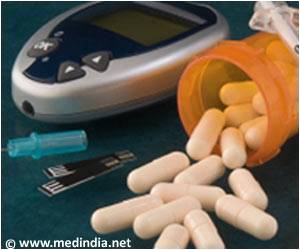The American College of Physicians (ACP) has updated its guidelines on the oral medication used for the treatment of type 2 diabetes in adults.
Highlights
- The American College of Physicians (ACP) has updated its recommendation for the treatment of type 2 diabetes based on the effectiveness and safety of oral medications.
- The ACP states that physicians should prescribe metformin to patients with type 2 diabetes.
- The ACP also recommends to add either sulfonylurea, thiazolidinedione, SGLT-2 inhibitor, or DPP-4 inhibitor to metformin, if a second oral medication is needed.
TOP INSIGHT
Metformin, is an effective treatment strategy for type 2 diabetes because it is associated with fewer adverse effects, and is cheaper than most other oral medications.
"Metformin, unless contraindicated, is an effective treatment strategy because it has better effectiveness, is associated with fewer adverse effects, and is cheaper than most other oral medications," said Nitin S. Damle, MD, MS, MACP, president. ACP.
"The escalating rates of obesity in the U.S. are increasing the incidence and prevalence of diabetes substantially. Metformin has the added benefit of being associated with weight loss." Nitin added.
Type 2 Diabetes- Facts
Diabetes is a leading cause of death in the U.S. Type 2 diabetes occurs when the body fails to utilize insulin effectively. Excess body weight and physical inactivity are its major contributors.
Type 2 diabetes is the most common form of the disease. It affects 90% to 95% of persons with diabetes.
The risk for type 2 diabetes increases with age, and nearly 26% of people in the United States older than 65 years have diabetes.
The global prevalence of diabetes has risen from 108 million in 1980 to 422 million in 2014. The prevalence of diabetes is rising more rapidly in middle- and low-income countries.
The total direct and indirect costs associated with diabetes in the United States alone reached $245 billion in 2012.
By 2010, WHO projects that diabetes will be the 7th leading cause of death.
Second Oral Medication
If a second oral medication is needed to improve high blood sugar, ACP recommends that considering adding either a sulfonylurea, thiazolidinedione, SGLT-2 inhibitor, or DPP-4 inhibitor to metformin.
"Adding a second medication to metformin may provide additional benefits," Dr. Damle said.
But the high cost of medicines of newer medicines may not always support the added benefit. ACP recommends that clinicians and patients discuss the benefits, adverse effects, and costs of additional medications.
Evaluating Interventions and Outcomes
ACP's guideline is based on a systematic review of randomized controlled trials and observational studies on the comparative effectiveness of oral medications for type 2 diabetes.
The interventions that were evaluated include: metformin alone or in combination with, thiazolidinediones, sulfonylureas, SGLT-2 inhibitor and dipeptidyl peptidase-4 (DPP4) inhibitors.
The outcomes that were evaluated included: intermediate outcomes of hemoglobin A1c, weight, systolic blood pressure, and heart rate; all-cause mortality, cardiovascular and cerebrovascular morbidity and mortality; retinopathy, nephropathy, neuropathy; and harms.
The review showed that use of metformin was associated with lower all-cause mortality, lower cardiovascular and lower cerebrovascular mortality compared to use of sulfonylureas only. When metformin was combined with sulfonylureas, it helped to reduced overall cardiovascular mortality
Evidence suggested that combination therapy with metformin and thiazolidinediones was effective in reducing hemoglobin A1c. And a combination therapy of metformin and DPP4 was superior for effective weight reduction.
Systolic blood pressure was reduced with a combination of metformin and an SGLT-2 inhibitor.
Metforim when used alone was found to be more effective in lowering risk of mild, moderate and and total hypoglycemia.
ACP updated its 2012 guideline on the effectiveness and safety of oral medications for the treatment of type 2 diabetes because, several new studies evaluating medications for type 2 diabetes have emerged.
The clinical practice guidelines are developed through a rigorous process based on an extensive review of the highest quality evidence available, including randomized control trials and data from observational studies.
Through its guidelines development process, ACP also identifies gaps in the data collected
References
- Diabetes - (http://www.who.int/mediacentre/factsheets/fs312/en/)
- Amir Qaseem et al. Oral Pharmacologic Treatment of Type 2 Diabetes Mellitus: A Clinical Practice Guideline Update From the American College of Physicians . Annals of Internal Medicine; (2017) DOI: 10.7326/M16-1860
Source-Medindia
 MEDINDIA
MEDINDIA





 Email
Email










